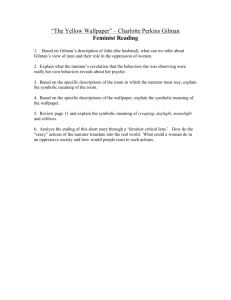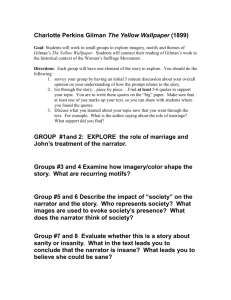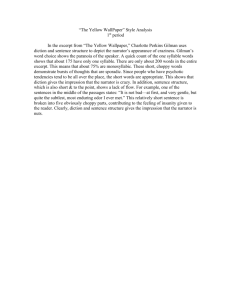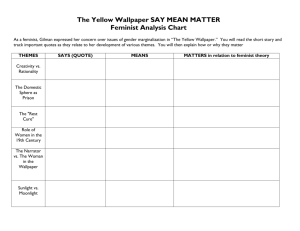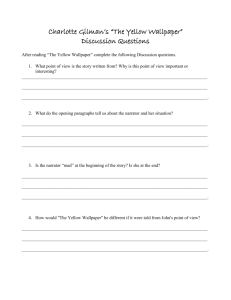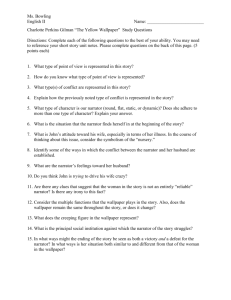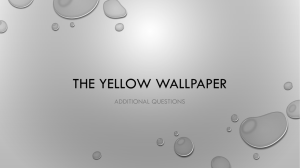English 123 - Discussion of The Yellow Wallpaper by Charlotte
advertisement
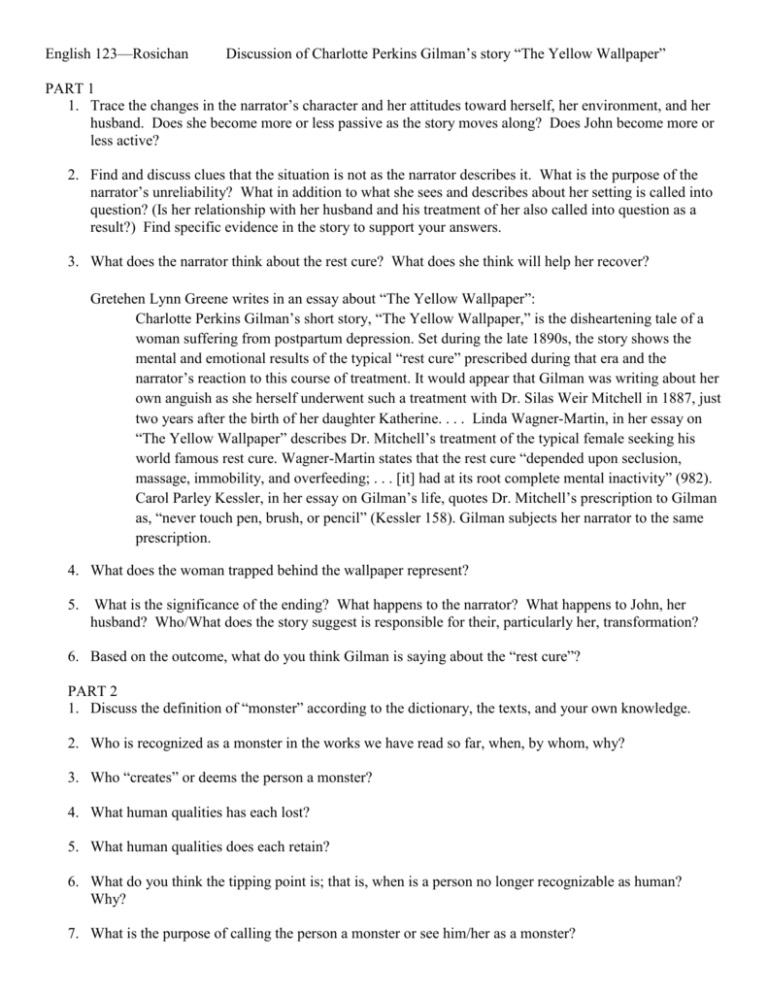
English 123—Rosichan Discussion of Charlotte Perkins Gilman’s story “The Yellow Wallpaper” PART 1 1. Trace the changes in the narrator’s character and her attitudes toward herself, her environment, and her husband. Does she become more or less passive as the story moves along? Does John become more or less active? 2. Find and discuss clues that the situation is not as the narrator describes it. What is the purpose of the narrator’s unreliability? What in addition to what she sees and describes about her setting is called into question? (Is her relationship with her husband and his treatment of her also called into question as a result?) Find specific evidence in the story to support your answers. 3. What does the narrator think about the rest cure? What does she think will help her recover? Gretehen Lynn Greene writes in an essay about “The Yellow Wallpaper”: Charlotte Perkins Gilman’s short story, “The Yellow Wallpaper,” is the disheartening tale of a woman suffering from postpartum depression. Set during the late 1890s, the story shows the mental and emotional results of the typical “rest cure” prescribed during that era and the narrator’s reaction to this course of treatment. It would appear that Gilman was writing about her own anguish as she herself underwent such a treatment with Dr. Silas Weir Mitchell in 1887, just two years after the birth of her daughter Katherine. . . . Linda Wagner-Martin, in her essay on “The Yellow Wallpaper” describes Dr. Mitchell’s treatment of the typical female seeking his world famous rest cure. Wagner-Martin states that the rest cure “depended upon seclusion, massage, immobility, and overfeeding; . . . [it] had at its root complete mental inactivity” (982). Carol Parley Kessler, in her essay on Gilman’s life, quotes Dr. Mitchell’s prescription to Gilman as, “never touch pen, brush, or pencil” (Kessler 158). Gilman subjects her narrator to the same prescription. 4. What does the woman trapped behind the wallpaper represent? 5. What is the significance of the ending? What happens to the narrator? What happens to John, her husband? Who/What does the story suggest is responsible for their, particularly her, transformation? 6. Based on the outcome, what do you think Gilman is saying about the “rest cure”? PART 2 1. Discuss the definition of “monster” according to the dictionary, the texts, and your own knowledge. 2. Who is recognized as a monster in the works we have read so far, when, by whom, why? 3. Who “creates” or deems the person a monster? 4. What human qualities has each lost? 5. What human qualities does each retain? 6. What do you think the tipping point is; that is, when is a person no longer recognizable as human? Why? 7. What is the purpose of calling the person a monster or see him/her as a monster?
